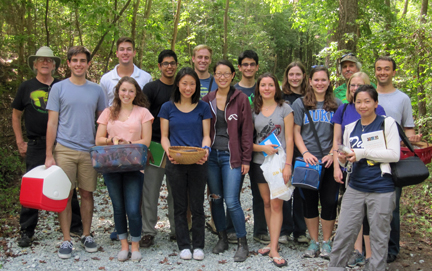By Anika Radiya-Dixit
Hello! My name is Anika Radiya-Dixit, and I am currently a sophomore in the Pratt School of Engineering, pursuing a double major in Electrical Engineering and Computer Science.
I have been interested in science and technology since a young age. My love for science and its integration with constantly changing electronic devices has propelled me to seek a deeper understanding of technology — both in theory and practical applications. I am most passionate about mobile development and entrepreneurship, and enjoy learning about advancements in Big Data and Internet of Things (IoT).
Throughout my high school years, I worked on several projects at various research laboratories in Stanford University, including understanding the advantages of adipose-derived stem cells for diabetic patients in a biomedical lab, as well as re-designing the Foldscope — a paper microscope to diagnose diseases — using concepts from mechanical engineering. Most recently, I worked for a startup project in the Silicon Valley on front-end technologies with Adobe’s Creative Cloud.
My passion for science and technology didn’t remain in reality — they spread to the world of science fiction and literature. I love reading, especially novels by A. Clarke, I. Asimov, R. Bradbury, J.K. Rowling, that pull the reader into a fictional world concocted so beautifully that sometimes I want to remain in those worlds forever. I also love creating such worlds of my own, and I enjoy writing poems, short stories, and novels in my free time.
My other hobbies include playing piano, composing songs, drawing, and tennis, and I look forward to being part of the Duke Research Blog!

















